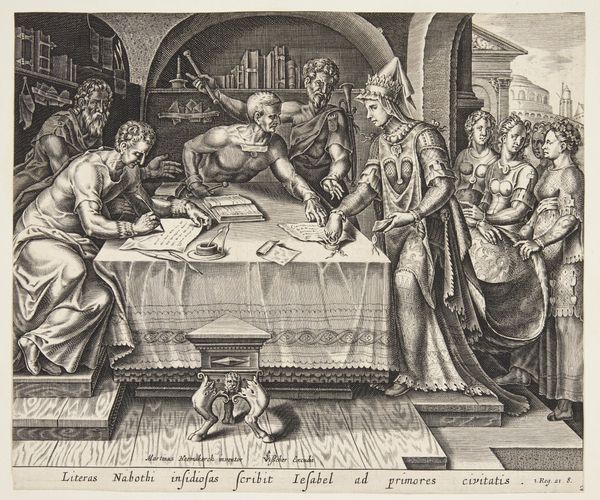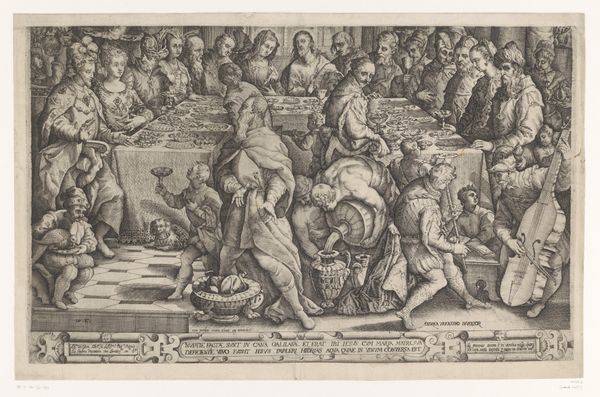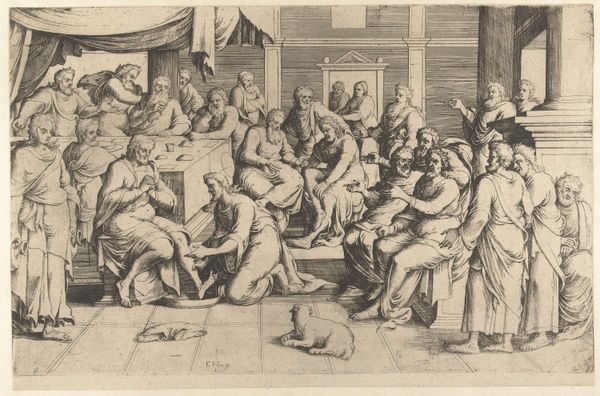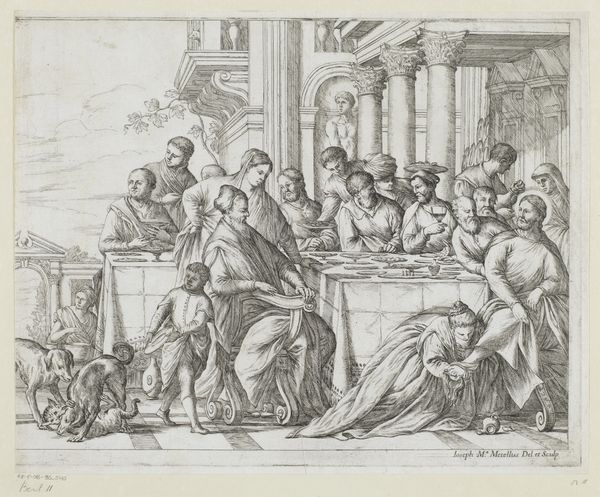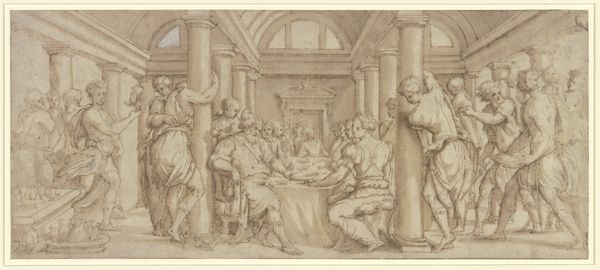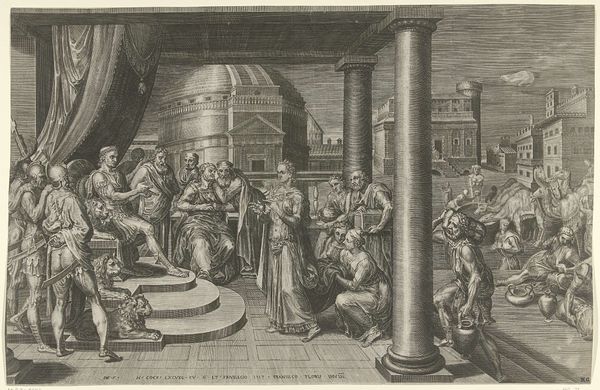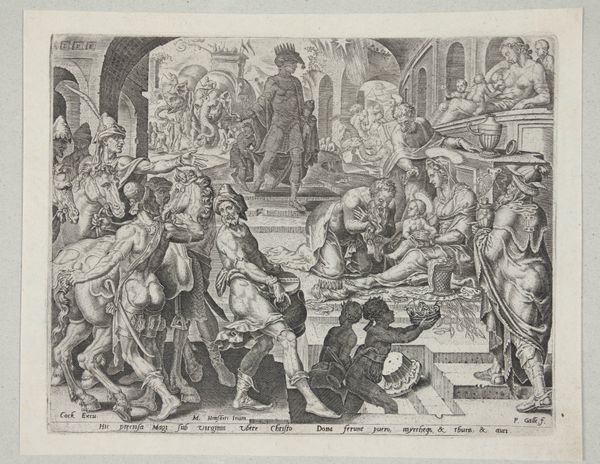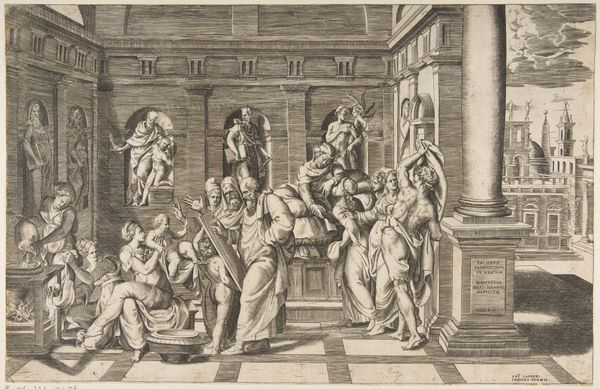
print, engraving
#
baroque
# print
#
figuration
#
group-portraits
#
genre-painting
#
history-painting
#
engraving
Dimensions: height 625 mm, width 358 mm, height 625 mm, width 335 mm
Copyright: Rijks Museum: Open Domain
Jacob Matham etched "The Wedding at Cana" sometime around 1600, an image teeming with symbols of transformation and plenty. Note the stacks of empty vessels, soon to be filled, and recall the ancient motif of the cornucopia. It is the horn of plenty, brimming with earthly delights. This vessel appears across cultures, from ancient Greece to Rome, always signifying abundance and divine favor. Here, Matham uses it to foreshadow the miraculous transformation. The servants dutifully pouring water, unknowingly participating in Christ’s first miracle, echo the figures in Roman bacchanals, forever linked to themes of conversion. Observe, also, the cat nestled under the table. In the subconscious, the cat is a symbol for foresight, as it sees beyond the immediate present moment, and reminds us of the unseen forces at work here. The miracle at Cana, through Matham’s intricate lines, becomes not just a biblical story, but a powerful reminder of the eternal dance between lack and abundance, the mundane and the miraculous, echoing through the ages.
Comments
No comments
Be the first to comment and join the conversation on the ultimate creative platform.





